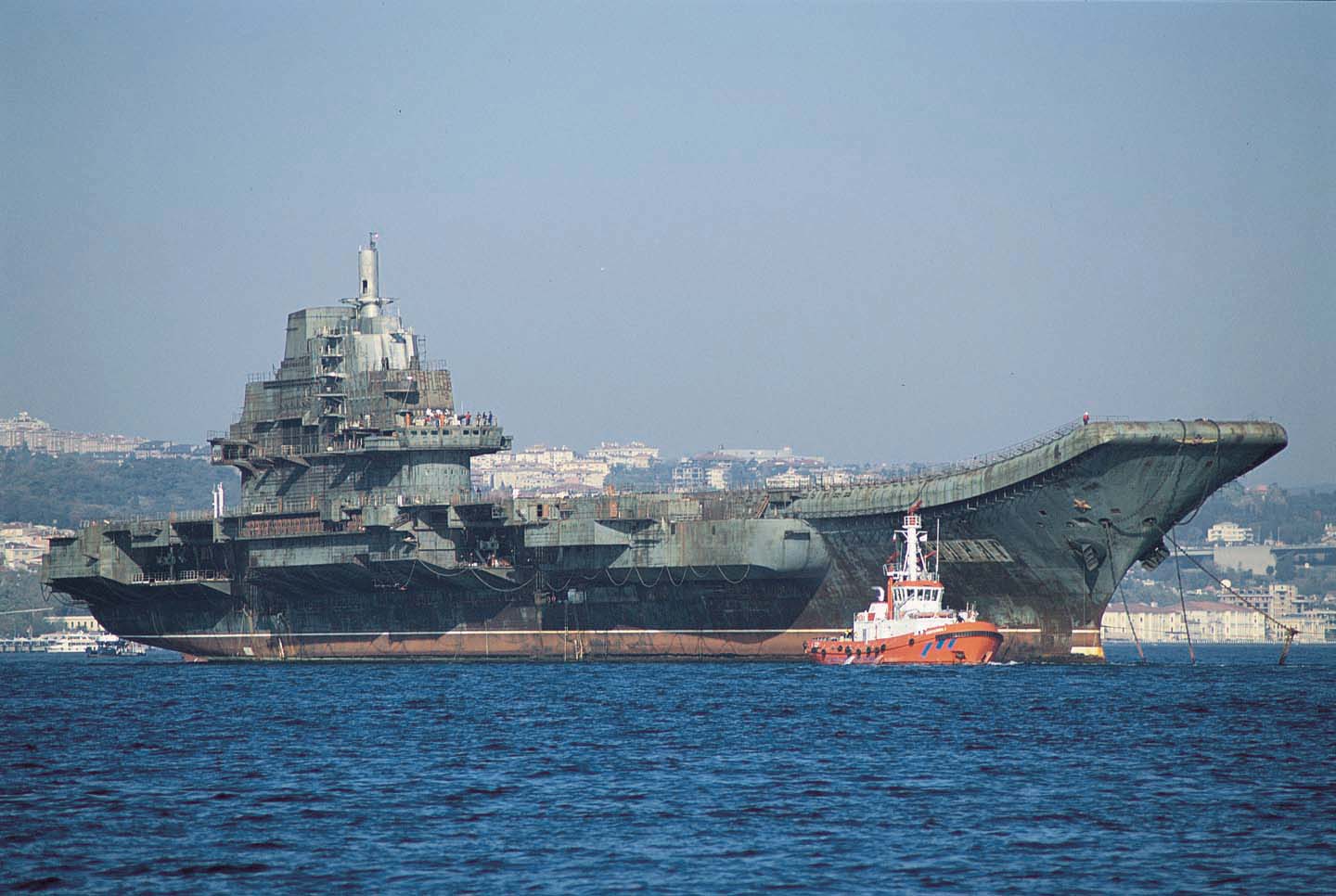In the 1990s, a pivotal moment in China’s naval history occurred with the acquisition of the Soviet aircraft carrier Varyag. This transaction, shrouded in a covert operation and inventive ruse, symbolizes more than just the procurement of a vessel; it epitomizes China’s strategic foresight and ambitions in enhancing its military prowess. The story of the Varyag is a testament to the nation’s resolve to redefine its naval power and assert its position on the global stage, showcasing its determination to achieve maritime dominance.

The Varyag’s journey started very early.
The Varyag’s journey started in 1985 when its keel was laid in Nikolayev, Ukraine. Launched in 1988, the carrier was far from complete, lacking essential components like an electrical system. By 1992, the unfinished vessel was transferred to Ukraine after Russian shipbuilders ceased work. Over the years, the Varyag was stripped of valuable parts, leaving it in a state of disrepair by 1998, with no engine or armaments. Despite its poor condition, China had its eyes set on this vessel, but the acquisition would require a cunning plan.
To avoid raising suspicions and creating tensions with the West, the Chinese government orchestrated a covert operation. They enlisted Xu Zengping, a businessman and former basketball player, to act as a front for the purchase. Xu was tasked with convincing the Ukrainians that he intended to convert the Varyag into a floating casino in Macau. This elaborate subterfuge was necessary to keep the true intentions of the Chinese military under wraps, ensuring the operation remained discreet.
Xu borrowed $30 million to set up a fake company and engaged in negotiations with the shipyard. After four days of intense discussions, he struck a deal to purchase the Varyag for a mere $20 million—a bargain for such a vessel, even in its dilapidated state. The sale attracted some attention, but many dismissed it as a far-fetched idea, given the ship’s condition, which seemed unlikely to be of any significant use.
The journey to bring the Varyag back to China was fraught with challenges. After the purchase, Xu arranged for a Dutch vessel to tow the carrier. However, the ship became stuck outside Istanbul for nearly 500 days due to bureaucratic hurdles. The towing costs mounted, and the Chinese government had to intervene to facilitate the vessel’s passage. After a series of mishaps, including a tropical storm and a broken cable, the Varyag finally arrived in China in 2002, marking the end of a tumultuous journey.
After extensive modernization and refitting, the Varyag was transformed into the Liaoning.
Once in Chinese waters, the Varyag underwent extensive modernization and refitting, transforming it into the Liaoning, China’s first aircraft carrier. Commissioned in September 2012, the Liaoning represented a significant milestone for the People’s Liberation Army Navy (PLAN). It was not just a ship; it was a symbol of China’s growing military prowess and aspirations on the global stage, embodying the nation’s strategic ambitions.
The Liaoning’s entry into service was met with considerable attention, both domestically and internationally. For many, it signified China’s emergence as a global power, while others viewed it as a step towards a more assertive naval presence. The carrier, originally built as a heavy aircraft-carrying cruiser for the Soviet Navy, had undergone extensive upgrades, including improvements to its hull, radar, and electronics systems.
Despite its advancements, the Liaoning’s capabilities are still limited compared to its Western counterparts. It displaces approximately 66,000 tons, making it smaller than the U.S. Nimitz-class carriers, which weigh over 97,000 tons. The Liaoning’s steam turbine power plant restricts its top speed to around 20 knots, significantly lower than the speeds achieved by nuclear-powered carriers like the USS Ronald Reagan.
The air wing aboard the Liaoning, consisting of 24 Shenyang J-15 multirole fighters, represents a leap in capability for the PLAN. However, it still falls short compared to the air arms of other nations, particularly the U.S. Navy, which boasts over 55 fixed-wing aircraft on its carriers. The J-15s, while advanced, lack the stealth technology found in fifth-generation fighters like the F-35C.

The transformation of the Varyag into the Liaoning represents a significant milestone in China’s naval history, underscoring the government’s commitment to enhancing its maritime capabilities. This endeavor speaks to the broader strategic imperatives of modern naval power and China’s aspirations within the global arena. As the Liaoning evolves from a dilapidated vessel to a symbol of national pride, it reflects the resilience and determination of a nation poised to assert its influence internationally. The implications of this transformation extend far beyond the seas, shaping the future landscape of military power dynamics.
Related posts:
China’s Very First Aircraft Carrier Was Built in Ukraine
How Does China’s First Aircraft Carrier Stack Up?
Chinese aircraft carrier Liaoning




